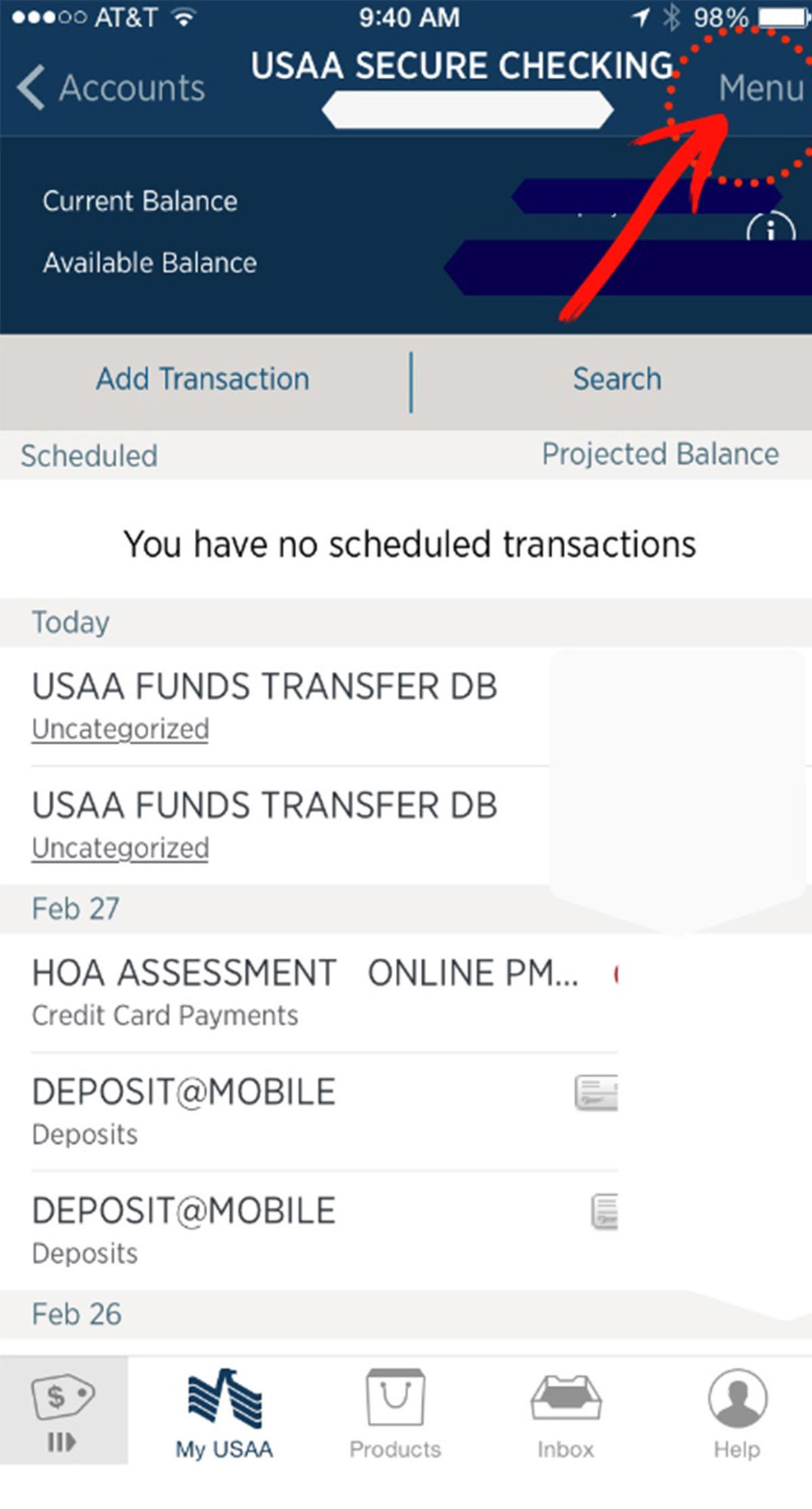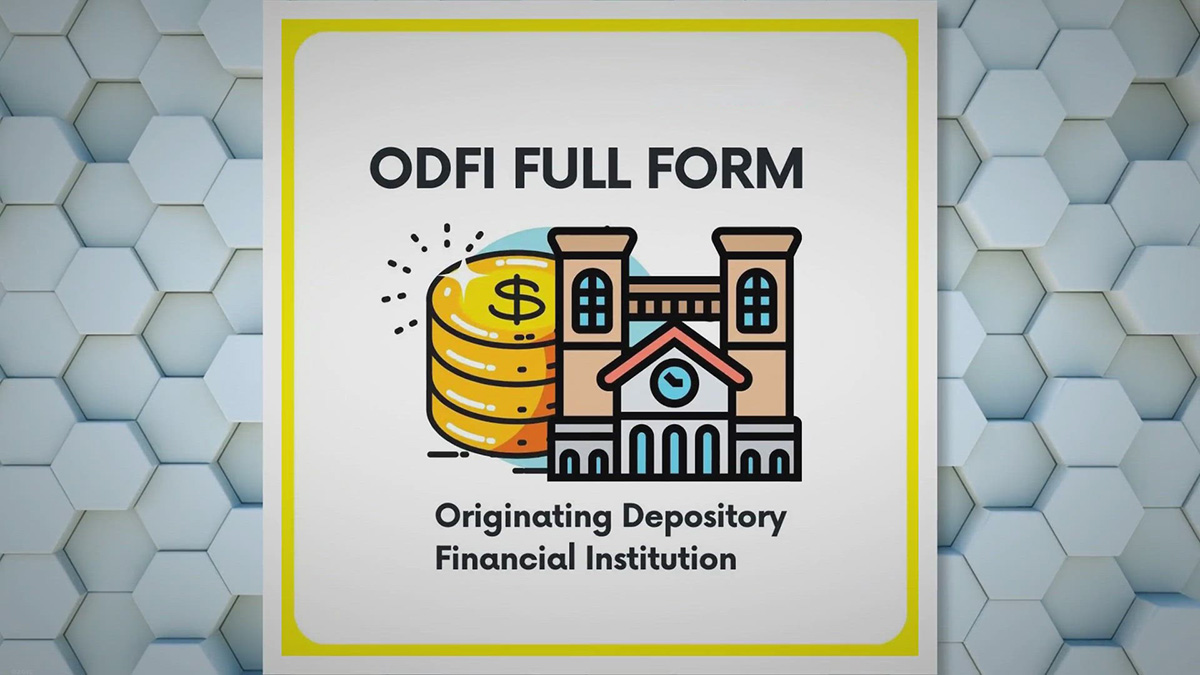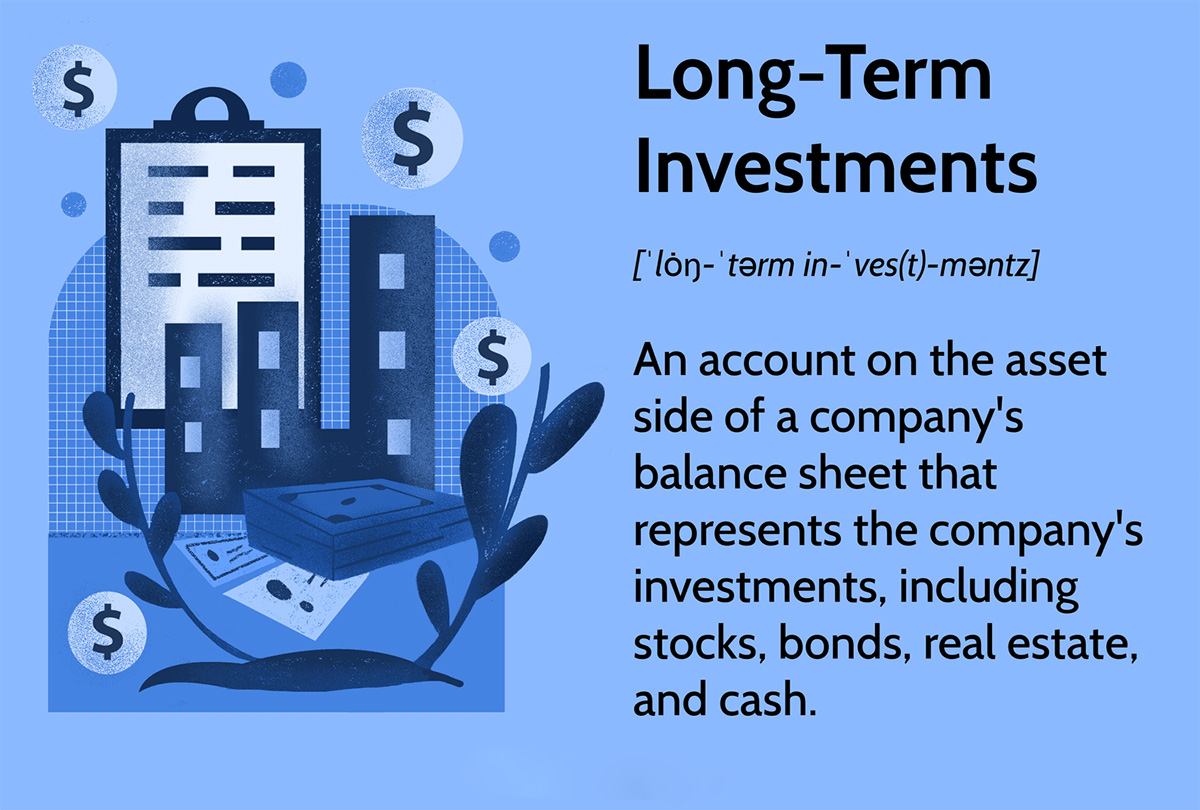

Finance
What Does FDES Mean In Banking
Published: November 2, 2023
Discover the meaning of FDES in banking and how it relates to finance. Uncover the importance and implications of FDES in the financial industry.
(Many of the links in this article redirect to a specific reviewed product. Your purchase of these products through affiliate links helps to generate commission for LiveWell, at no extra cost. Learn more)
Table of Contents
Introduction
Finance plays a crucial role in the functioning of the global economy, and the banking sector is at the heart of financial activities. As the banking industry evolves and becomes more complex, it is essential for banks to have mechanisms in place to assess and manage their financial stability and risk exposure. One such mechanism is the Financial Data Exchange Standard (FDES), a widely recognized framework for reporting and analyzing financial data in the banking sector.
FDES serves as a common language for the exchange of financial information, enabling banks to standardize their data and facilitate transparent and accurate reporting. It encompasses a comprehensive set of measures and indicators that allow banks and regulators to assess the financial health and stability of individual institutions as well as the overall banking system.
In this article, we will explore what FDES means in the context of banking and delve into its importance, measures, regulatory framework, challenges in implementation, and the benefits it brings to the banking sector. Furthermore, we will showcase some successful case studies where FDES has been effectively utilized in enhancing financial stability and risk management.
By gaining a solid understanding of FDES in banking, both industry professionals and individuals interested in the financial sector will be able to appreciate its significance and how it contributes to a stable and well-regulated banking system.
Definition of FDES
The Financial Data Exchange Standard (FDES) is a standardized framework for reporting and exchanging financial data in the banking industry. It provides a common set of rules, formats, and definitions that enable banks to communicate and share financial information with each other, as well as with regulatory bodies.
FDES establishes a uniform language for financial data, ensuring consistency and accuracy in reporting. It encompasses various data elements, such as balance sheets, income statements, cash flow statements, and key financial ratios. This standardized format allows for easier comparison and analysis of financial information across different banks, enhancing transparency and promoting better risk management practices.
Within the FDES framework, financial data is organized into specific categories and subcategories, ensuring that all relevant aspects of a bank’s financial position and performance are captured. This includes information on assets, liabilities, capital adequacy, liquidity, profitability, and risk exposure. Additionally, FDES provides guidelines for the classification, calculation, and presentation of financial data, further ensuring consistency and comparability.
The development and adoption of FDES have been driven by international standard-setting bodies, such as the Basel Committee on Banking Supervision (BCBS) and the International Financial Reporting Standards (IFRS) Foundation. These organizations work towards harmonizing reporting standards and promoting best practices in the banking industry.
Overall, FDES serves as a crucial tool for standardizing and harmonizing financial reporting in the banking sector, allowing for better analysis, risk assessment, and decision-making. Its adoption by banks and regulatory bodies helps foster transparency, efficiency, and stability in the financial system.
Importance of FDES in Banking
The application of the Financial Data Exchange Standard (FDES) in the banking industry holds significant importance for both banks and regulators. Here are some key reasons why FDES is essential:
- Standardization and Consistency: FDES provides a standardized framework for reporting and exchanging financial data. This ensures consistency in the format, definitions, and calculations used, allowing for easier comparison and analysis of data across different banks and regulatory entities. Standardization promotes transparency and enhances the reliability and accuracy of financial information.
- Improved Risk Management: FDES enables banks to assess their financial stability and risk exposure more effectively. By implementing a common set of measures and indicators, FDES facilitates the identification and measurement of risks, such as credit risk, liquidity risk, and market risk. This, in turn, helps banks in making informed decisions and implementing appropriate risk management strategies.
- Enhanced Regulatory Oversight: FDES plays a vital role in enabling regulatory bodies to monitor and supervise the banking sector. The standardized format ensures that all relevant financial information is readily available to regulators, making it easier to identify potential systemic risks and take appropriate actions. FDES helps regulators in maintaining the stability and integrity of the financial system.
- Efficient Data Exchange: With FDES, the exchange of financial data between banks, auditors, and regulators becomes more efficient and streamlined. The standardized format reduces the need for manual data entry and reconciliation, minimizing errors and enhancing data accuracy. This leads to improved efficiency in data processing, reporting, and analysis.
- Global Compliance: FDES aligns with international reporting standards, such as the International Financial Reporting Standards (IFRS), allowing banks to meet regulatory compliance requirements on a global scale. It ensures that banks adhere to consistent reporting practices and facilitates cross-border comparisons. FDES supports international collaboration and coherence in financial reporting.
Overall, the implementation of FDES in the banking industry brings numerous benefits, including improved transparency, risk management, regulatory oversight, efficiency, and global compliance. It fosters stability, trust, and confidence in the financial system, benefiting banks, regulators, and stakeholders alike.
FDES Measures and Indicators
Financial Data Exchange Standard (FDES) encompasses a wide range of measures and indicators that banks use to assess their financial health and performance. These measures provide valuable insights into key aspects of a bank’s operations, risk exposure, and profitability. Here are some commonly used FDES measures and indicators:
- Capital Adequacy Ratio: This measure assesses a bank’s ability to absorb potential losses and maintain sufficient capital to support its operations. It compares a bank’s capital (Tier 1 and Tier 2) to its risk-weighted assets and provides an indication of its resilience against adverse events.
- Liquidity Ratio: The liquidity ratio shows a bank’s ability to meet its short-term obligations. It compares a bank’s liquid assets (cash and near-cash assets) to its short-term liabilities, providing insights into its ability to fund day-to-day operations and withstand liquidity shocks.
- Asset Quality Indicators: These indicators assess the quality and performance of a bank’s loan portfolio. They include metrics such as non-performing loan ratio, loan loss provisions, and loan-to-asset ratio. These indicators help gauge credit risk and the asset quality of a bank’s loan book.
- Profitability Ratios: Profitability ratios evaluate a bank’s ability to generate profits from its core business activities. Common profitability ratios include return on assets (ROA), return on equity (ROE), net interest margin (NIM), and operating expense ratio. These ratios provide insights into a bank’s earnings performance and efficiency.
- Risk Weighted Assets: Risk-weighted assets (RWA) reflect the level of risk associated with a bank’s assets. It assigns a risk weight to each asset class based on its credit risk and calculates the total RWA. This measure determines the minimum capital requirement for the bank and corresponds to the level of risk the bank is exposed to.
- Stress Testing: Stress tests evaluate a bank’s resilience under adverse scenarios or stressed economic conditions. They assess the impact of severe shocks on key financial metrics and help identify vulnerabilities in a bank’s operations, capital adequacy, liquidity, and profitability.
FDES measures and indicators allow banks to assess their financial performance, risk exposure, and compliance with regulatory requirements. By monitoring these indicators, banks can identify areas of improvement, implement risk mitigation strategies, and make informed strategic decisions. FDES promotes transparency, accountability, and sound financial management practices within the banking industry.
Regulatory Framework for FDES
The Financial Data Exchange Standard (FDES) operates within a regulatory framework that ensures its effective implementation and compliance within the banking industry. Regulatory bodies play a crucial role in overseeing the adoption and usage of FDES by banks. Here are the key components of the regulatory framework for FDES:
- International Standard-Setting Bodies: Organizations such as the Basel Committee on Banking Supervision (BCBS) and the International Financial Reporting Standards (IFRS) Foundation contribute to the development and promotion of FDES. These bodies work towards harmonizing reporting standards and guidelines to enhance financial stability and risk management in the banking sector.
- National Regulatory Authorities: Each country has its own regulatory authority responsible for overseeing the banking sector and ensuring compliance with reporting standards, including FDES. These authorities set guidelines and requirements for banks to follow in their financial reporting and may conduct audits and examinations to assess compliance.
- Reporting Standards and Guidelines: Regulatory authorities issue reporting standards and guidelines that specify the format, content, and frequency of financial reporting. These standards and guidelines align with FDES to ensure consistent reporting practices and facilitate data comparability among banks and regulatory entities.
- Compliance Monitoring and Enforcement: Regulatory bodies monitor banks’ compliance with FDES through regular reporting submissions and audits. They may conduct on-site inspections, review internal control systems, and impose penalties for non-compliance. Compliance monitoring and enforcement mechanisms help maintain the accuracy, reliability, and transparency of financial data reported by banks.
- Adoption and Integration: Regulatory authorities work closely with banks and technology providers to facilitate the adoption and integration of FDES. They may provide guidance on data validation, data reconciliation, and reporting methodologies to ensure accurate and reliable data submissions. Integration of FDES into banks’ reporting systems is a collaborative effort between banks and regulatory authorities.
The regulatory framework for FDES is essential in promoting consistent and standardized financial reporting practices across the banking sector. It fosters trust, transparency, and accountability among banks and regulatory entities, enabling effective oversight, risk management, and systemic stability.
Challenges in Implementing FDES in Banking
While the adoption of the Financial Data Exchange Standard (FDES) offers significant benefits to the banking industry, there are several challenges that banks face in implementing FDES. These challenges stem from various factors, including technical, operational, and cultural aspects. Here are some common challenges encountered:
- Data Quality and Consistency: Ensuring data quality and consistency across different reporting entities can be challenging. Banks need to establish robust data governance frameworks to address data collection, validation, and reconciliation issues. This includes addressing discrepancies, inconsistencies, and errors in financial data to ensure accurate reporting.
- Legacy Systems and Integration: Many banks still rely on legacy systems that may not be compatible with the requirements of FDES. Updating and integrating these systems to support the standardized reporting format can be complex and time-consuming. Banks need to invest in technology infrastructure upgrades to enable seamless integration and data transmission.
- Complexity and Standardization: FDES encompasses a wide range of measures, indicators, and reporting requirements. Banks need to navigate through the complexity of these standards, ensuring that all relevant data elements are captured and reported accurately. The process of aligning internal reporting practices with FDES standards may require significant effort and resources.
- Regulatory Compliance: Compliance with FDES reporting requirements involves meeting stringent regulatory standards. Banks need to ensure that they understand and adhere to the regulations set by the supervisory authorities. Failure to comply with reporting guidelines can lead to penalties and reputational risks.
- Skills and Training: Implementing FDES requires employees with the necessary skills and expertise in financial reporting and data management. Banks need to provide training and development programs to build the capabilities of their staff to effectively use and interpret financial data within the FDES framework.
- Change Management: Adopting FDES entails significant changes in reporting processes, workflows, and internal controls. Banks need to carefully manage the transition to ensure minimal disruptions to their operations. Communication, stakeholder engagement, and change management strategies play a crucial role in facilitating a smooth transition to FDES.
Addressing these challenges requires a comprehensive approach that involves collaboration between banks, regulatory authorities, and technology providers. By overcoming these hurdles, banks can fully realize the benefits of FDES, including improved transparency, risk management, and decision-making processes.
Benefits of FDES in Banking
The implementation of the Financial Data Exchange Standard (FDES) in the banking sector brings forth a wide range of benefits for both banks and stakeholders. Here are some key advantages of adopting FDES:
- Enhanced Transparency: FDES promotes transparency in financial reporting by providing a standardized framework for data exchange. It ensures consistency in reporting practices, making it easier for stakeholders to understand and analyze financial information across different banks.
- Improved Risk Management: FDES enables banks to assess and manage risks more effectively. The standardized measures and indicators allow for better identification, measurement, and monitoring of risks, such as credit risk, liquidity risk, and market risk. This leads to enhanced risk management practices and improved decision-making.
- Better Regulatory Compliance: FDES aligns reporting standards with regulatory requirements, ensuring that banks adhere to consistent practices. Compliance with FDES facilitates smoother regulatory reporting and helps banks meet regulatory expectations, reducing the risk of non-compliance penalties and reputational damage.
- Efficient Data Exchange: FDES streamlines the exchange of financial data between banks, regulators, and auditors. The standardized format reduces manual data entry and reconciliation efforts and minimizes errors. This leads to improved efficiency in data processing, reporting, and analysis, saving time and resources.
- Enhanced Decision-Making: With FDES, banks have access to accurate and reliable financial data at their fingertips. This enables better-informed decision-making, as data can be quickly analyzed and benchmarked against industry standards. Timely and accurate financial information supports strategic planning, performance evaluation, and resource allocation.
- Facilitates Comparisons and Analysis: FDES promotes comparability of financial data across banks. Standardized reporting formats and measures allow for easier comparisons and analysis of financial performance, risk exposure, and profitability. This enables industry-wide benchmarking and facilitates a deeper understanding of the banking sector as a whole.
- Supports Auditing and Assurance: FDES assists auditors in performing their duties more effectively. The standardized reporting format enables the efficient and accurate examination of financial statements, supporting auditors in their assurance and validation processes.
Overall, the adoption of FDES in the banking industry brings numerous benefits, including increased transparency, improved risk management, regulatory compliance, efficient data exchange, better decision-making, and enhanced industry analysis. It fosters a more robust and reliable financial system that benefits all stakeholders involved.
Case Studies: Successful Implementation of FDES in Banking
The successful implementation of the Financial Data Exchange Standard (FDES) has been witnessed by numerous banks across the globe. Let’s explore a few case studies that highlight the benefits and positive outcomes of adopting FDES:
- Bank XYZ: Bank XYZ, a multinational bank, implemented FDES across its global operations. By standardizing its financial reporting, the bank experienced improved transparency and accuracy in its financial data. This led to enhanced risk management practices, as the bank could identify and address potential risks more effectively. Additionally, the standardized format streamlined the data exchange between different subsidiaries and facilitated easier comparison and analysis of performance across regions.
- Bank ABC: Bank ABC, a regional bank, implemented FDES to comply with regulatory requirements and improve reporting efficiency. As a result, the bank experienced a significant reduction in manual data entry and reconciliation efforts. This saved valuable time and resources, allowing staff to focus on more strategic tasks. The standardized reporting format also facilitated robust internal control systems and enhanced data accuracy, ultimately leading to better decision-making processes.
- Bank DEF: Bank DEF, a large commercial bank, adopted FDES to strengthen its risk management framework. With FDES, the bank could effectively assess and monitor various risk indicators, such as capital adequacy, liquidity, and asset quality. This provided the bank with valuable insights into its risk exposure and informed proactive risk mitigation strategies. The standardized risk reporting format also improved communication with regulators and enhanced the bank’s compliance with regulatory requirements.
These case studies demonstrate the positive impact of implementing FDES in banking. By adopting standardized reporting frameworks, these banks achieved greater transparency, improved risk management practices, increased operational efficiency, and better compliance with regulatory guidelines. FDES enabled these banks to make informed decisions, enhance stakeholder trust, and strengthen their overall financial stability.
Conclusion
The Financial Data Exchange Standard (FDES) plays a vital role in the banking industry by providing a standardized framework for reporting and exchanging financial data. It enables banks to enhance transparency, improve risk management practices, ensure regulatory compliance, and make better-informed decisions. Through the implementation of FDES, banks can achieve greater efficiency in data exchange, establish consistent reporting practices, and foster a more stable and trustworthy financial system.
While the adoption of FDES comes with its challenges, such as data quality, legacy system integration, and regulatory compliance, the benefits far outweigh the obstacles. Successful case studies have showcased the positive outcomes of implementing FDES, including improved transparency, enhanced risk management, streamlined reporting processes, and better compliance with regulatory requirements.
As the banking industry continues to evolve and face increasing complexities, FDES remains a crucial tool for ensuring accurate financial reporting, effective risk management, and sound decision-making processes. It provides a common language for banks, regulators, and auditors to communicate and analyze financial information, promoting stability, efficiency, and trust within the financial system.
In conclusion, the widespread adoption of FDES in the banking industry is essential for maintaining a well-regulated financial system. By embracing FDES, banks can enhance their financial health, improve risk management, and foster greater confidence among stakeholders. The future of banking relies on the continued implementation and development of FDES as a foundational framework for standardized financial reporting.














